president truman
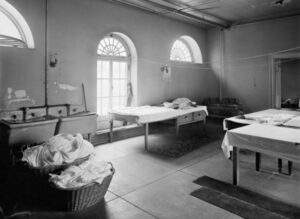
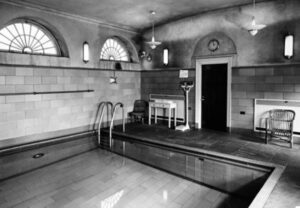 Construction began on the White House on October 13, 1792, and was finally finished on November 1, 1800. Construction was slower in those days, because they didn’t have the equipment we have today. The current White House has 132 rooms. The original White House had 100 rooms. The White House has 54,900 square feet. The White House sits on 18 acres of land. It all it is an impressive building, but there is more to it than just that.
Construction began on the White House on October 13, 1792, and was finally finished on November 1, 1800. Construction was slower in those days, because they didn’t have the equipment we have today. The current White House has 132 rooms. The original White House had 100 rooms. The White House has 54,900 square feet. The White House sits on 18 acres of land. It all it is an impressive building, but there is more to it than just that.
There have been a number of rooms that began as one thing, only to become something else later on. One of the rooms that has had a couple of identities is the Press Briefing Room. These days it is the James S. Brady Press Briefing Room. It was so named after White House Press Secretary James Brady, who was shot and permanently disabled during the assassination attempt on President Reagan. That room, located in the West Wing of the White House was not always such a necessary room, mostly because press briefings are really more of a modern-day thing. The room has always existed, however. In 1909, it was the White House laundry, and during President Truman’s time in office (April 12, 1945 – January 20,1953) it was the White House pool.
By 1950, the White House was 150 years old and in a serious state of disrepair. In order to make is inhabitable 
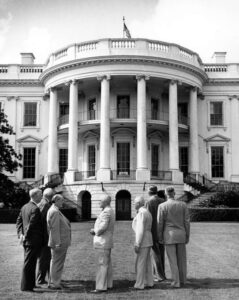 again, the entire building was gutted and rebuilt to make it more stable. It also seemed like a good time to improve on its design, so some improvements and additions were made. White House architect Lorenzo Simmons Winslow designed and built an air raid shelter under the East Terrace on the orders of naval aide Rear Admiral Robert Dennison. There had been a bomb shelter before, but it was built in 1942 and with the invention of the atomic bomb, the old shelter was not strong enough to withstand such an assault. Because little research had been conducted into how to withstand such an assault, construction of the shelter took more than two years and required the removal of the East Terrace entirely. Unfortunately, the 1952 shelter was rendered obsolete when the first test produced a force of 10.4 million tons. This shelter was designed to withstand a force of only 30,000 tons, so this would never work.
again, the entire building was gutted and rebuilt to make it more stable. It also seemed like a good time to improve on its design, so some improvements and additions were made. White House architect Lorenzo Simmons Winslow designed and built an air raid shelter under the East Terrace on the orders of naval aide Rear Admiral Robert Dennison. There had been a bomb shelter before, but it was built in 1942 and with the invention of the atomic bomb, the old shelter was not strong enough to withstand such an assault. Because little research had been conducted into how to withstand such an assault, construction of the shelter took more than two years and required the removal of the East Terrace entirely. Unfortunately, the 1952 shelter was rendered obsolete when the first test produced a force of 10.4 million tons. This shelter was designed to withstand a force of only 30,000 tons, so this would never work.
In addition to the new nuclear shelter, a tunnel was added. These days those tunnels are big in the news, but back then, they were probably a little-known addition. This reinforced concrete channel ran from the West Wing to the East Wing. Though not enough to stop a nuclear incident itself, the tunnel allowed quick passage from one end of the White House to the other, as well as access to the new air raid shelter. The presence of the tunnel demonstrates just how concerned the Truman White House was about securing itself against air assaults at that volatile time in history. That first tunnel inside the White House isn’t the only underground feature. In 1987, a second tunnel was built under the name Project ZP. That tunnel, accessible from a secret passage 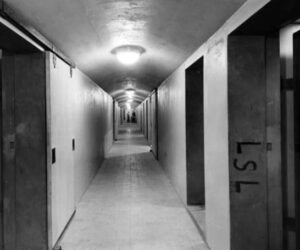
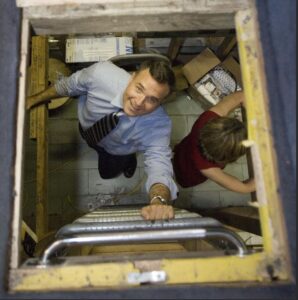 within the Oval Office, leads to the basement of the East Wing and on to the Treasury Building. Its construction, which was largely secret, created a large sinkhole in the White House rose garden. The tunnel was reportedly built to quickly get the president out of the office during an incursion, but it was also used at least once to sneak former president Richard Nixon into a foreign policy meeting. I’m sure there are other changes to the White House, that we are not privy to, and may never know, because there are always secrets in this kind of building.
within the Oval Office, leads to the basement of the East Wing and on to the Treasury Building. Its construction, which was largely secret, created a large sinkhole in the White House rose garden. The tunnel was reportedly built to quickly get the president out of the office during an incursion, but it was also used at least once to sneak former president Richard Nixon into a foreign policy meeting. I’m sure there are other changes to the White House, that we are not privy to, and may never know, because there are always secrets in this kind of building.
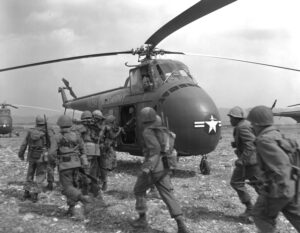 Most wars are nation against nation or against nations, but some wars split a nation in two…literally. Such was the case in Korea, which was once one nation, and after the war, became two nations. It seems like no matter which nation invades the other, or the other half, the invading nation is always trying to enslave the other nation or the other half of the nation. In the case of Korea, South Korea wanted to be a Democratic nation, and North Korea wanted to be a Communist nation. They have been fighting about their differences for years. That is simply a fight, South Korea couldn’t afford to lose, and really, North Korean people didn’t want communism either. Anyone who studies socialism and communism is clearly able to see that neither of these forms of government benefit the people of the nation. They just benefit the government. The nation split into two nations, and it was a battle to hold off North Korea from that day forward.
Most wars are nation against nation or against nations, but some wars split a nation in two…literally. Such was the case in Korea, which was once one nation, and after the war, became two nations. It seems like no matter which nation invades the other, or the other half, the invading nation is always trying to enslave the other nation or the other half of the nation. In the case of Korea, South Korea wanted to be a Democratic nation, and North Korea wanted to be a Communist nation. They have been fighting about their differences for years. That is simply a fight, South Korea couldn’t afford to lose, and really, North Korean people didn’t want communism either. Anyone who studies socialism and communism is clearly able to see that neither of these forms of government benefit the people of the nation. They just benefit the government. The nation split into two nations, and it was a battle to hold off North Korea from that day forward.
On June 27, 1950, President Harry S Truman announced that he is ordering United States Air and Naval forces to South Korea to aid the democratic nation in fighting off an invasion by communist North Korea. The Korean War had begun, and it would rage on until July 27, 1953. Truman explained that the United States was undertaking the major military operation to enforce a United Nations resolution calling for an end to hostilities, and to stem the spread of communism in Asia. Truman also sent the United States 7th Fleet to Formosa (Taiwan) to fend of any possible invasion by communist China and ordered increased military aid to French forces who were fighting communist guerrillas in Vietnam. Communism (and Socialism too) is a poison and a killer. It robs the nation of any kind of freedom. People are no longer able to do business as they would like to, but are rather at the mercy of the government business choices, and then the government takes what they make anyway.
At the Yalta Conference toward the end of World War II, Korea was split into North and South Korea when the United States, the USSR, and Great Britain agreed to divide Korea into two separate occupation zones. Split along the 38th parallel, the Soviet forces occupied the northern zone and the Americans were stationed in the south. In 1947, the United States tried to institute free elections, but the Soviets wouldn’t agree to it. In May of 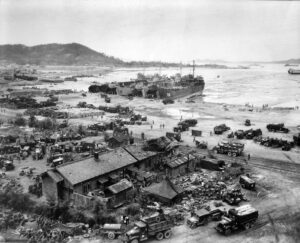 1948, the communist state of the Korean Democratic People’s Republic was established in North Korea. In August, the Democratic Republic of Korea was established in South Korea. By 1949, both the United States and the USSR had withdrawn the majority of their troops from the Korean Peninsula.
1948, the communist state of the Korean Democratic People’s Republic was established in North Korea. In August, the Democratic Republic of Korea was established in South Korea. By 1949, both the United States and the USSR had withdrawn the majority of their troops from the Korean Peninsula.
Unfortunately, that didn’t solve the problem, and likely exacerbated it. Without the controls they had placed, things quickly got bad again, and at dawn on June 25, 1950, which is still June 24 in the United States and Europe, approximately 90,000 communist troops of the North Korean People’s Army invaded South Korea across the 38th parallel. The move caught the Republic of Korea’s forces completely off guard and threw them into a hasty southern retreat. That afternoon, the UN Security Council met in an emergency session and approved a US resolution calling for an “immediate cessation of hostilities” and the withdrawal of North Korean forces to the 38th parallel. At the time, the USSR was boycotting the Security Council over the UN’s refusal to admit the People’s Republic of China and so missed its chance to veto this and other crucial UN resolutions.
On June 27th, when President Truman announced to the nation and the world that America would intervene in the Korean conflict in order to prevent the conquest of an independent nation by communism, he was also suggesting that the USSR was behind the North Korean invasion, and in fact the Soviets had given tacit approval to the invasion, which was carried out with Soviet-made tanks and weapons. There was concern that US intervention would lead to open warfare between the United States and Russia after years of “cold war.” Nevertheless, Truman’s decision was met with overwhelming approval from Congress and the US public. Truman did not ask for a declaration of war, but Congress voted to extend the draft and authorized Truman to call up reservists. Everyone knew it was inevitable.
On June 28, the Security Council met again. The Soviet Union was still boycotting, and so, in their absence, the council passed a US resolution approving the use of force against North Korea. On June 30, Truman agreed to 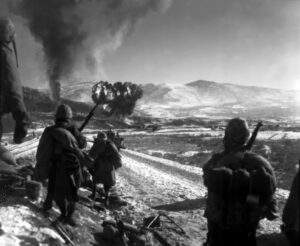 send US ground forces to Korea, and on July 7 the Security Council recommended that all UN forces sent to Korea be put under US command. The next day, General Douglas MacArthur was named commander of all UN forces in Korea. The Korean war was underway, and before it was over, South Korea, the United States, and their allied casualties included 170,927 dead and 32,585 missing (162,394 South Koreans, 36,574 Americans, 4,544 others), with a total of 566,434 wounded. North Korea and their allied casualties included 398,000–926,000 dead and 145,000+ missing (335,000–526,000 North Koreans, 208,729–400,000 Chinese, 299 Soviet), and a total of 686,500 wounded.
send US ground forces to Korea, and on July 7 the Security Council recommended that all UN forces sent to Korea be put under US command. The next day, General Douglas MacArthur was named commander of all UN forces in Korea. The Korean war was underway, and before it was over, South Korea, the United States, and their allied casualties included 170,927 dead and 32,585 missing (162,394 South Koreans, 36,574 Americans, 4,544 others), with a total of 566,434 wounded. North Korea and their allied casualties included 398,000–926,000 dead and 145,000+ missing (335,000–526,000 North Koreans, 208,729–400,000 Chinese, 299 Soviet), and a total of 686,500 wounded.

